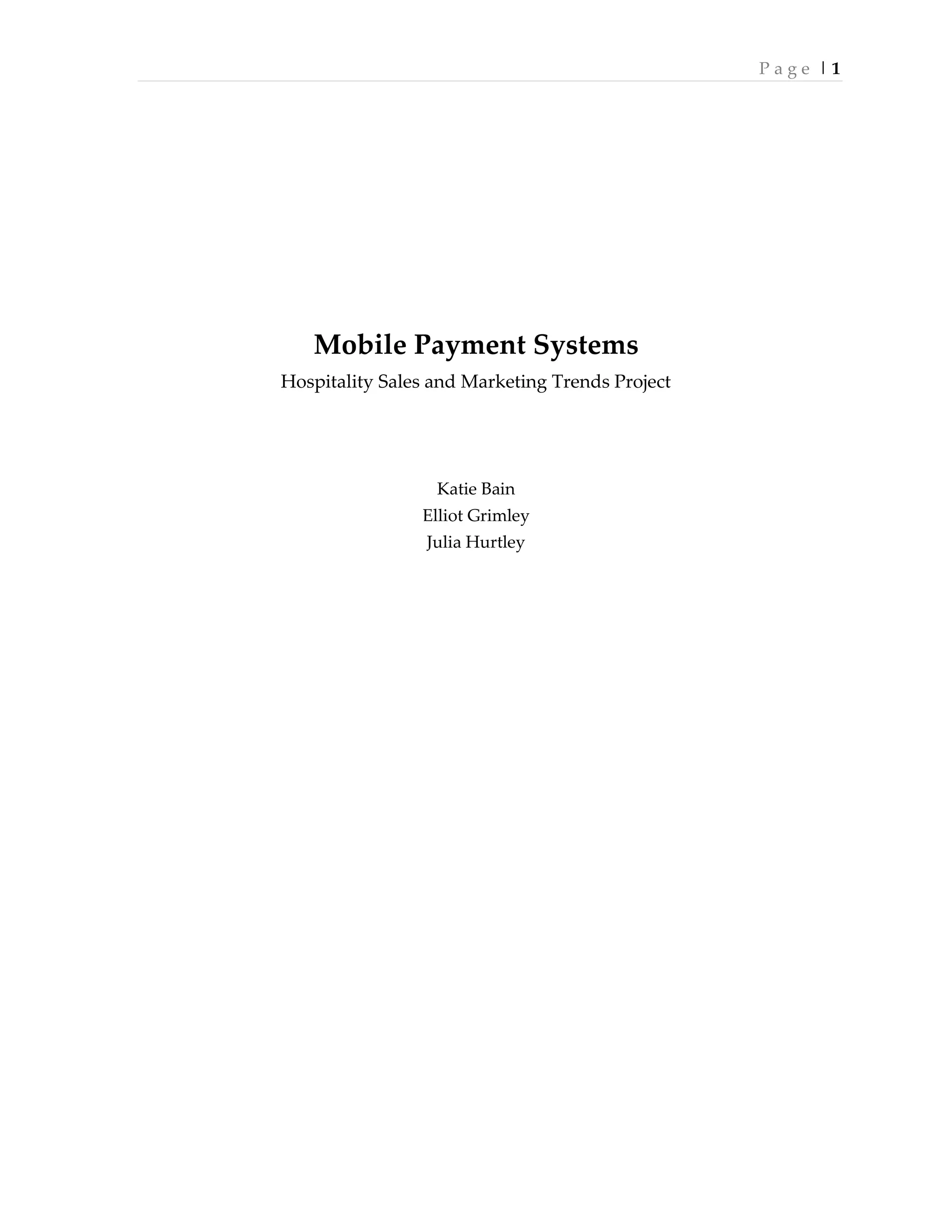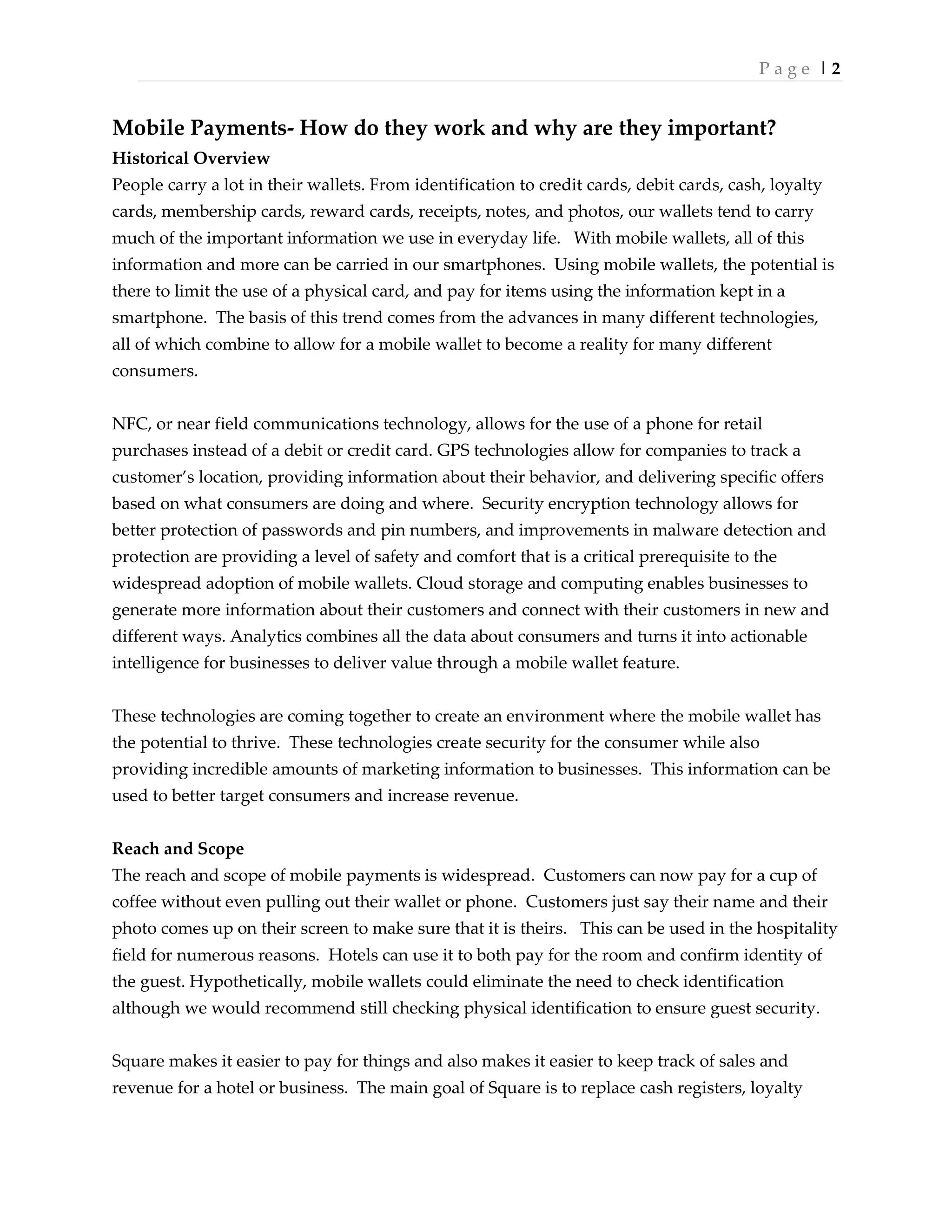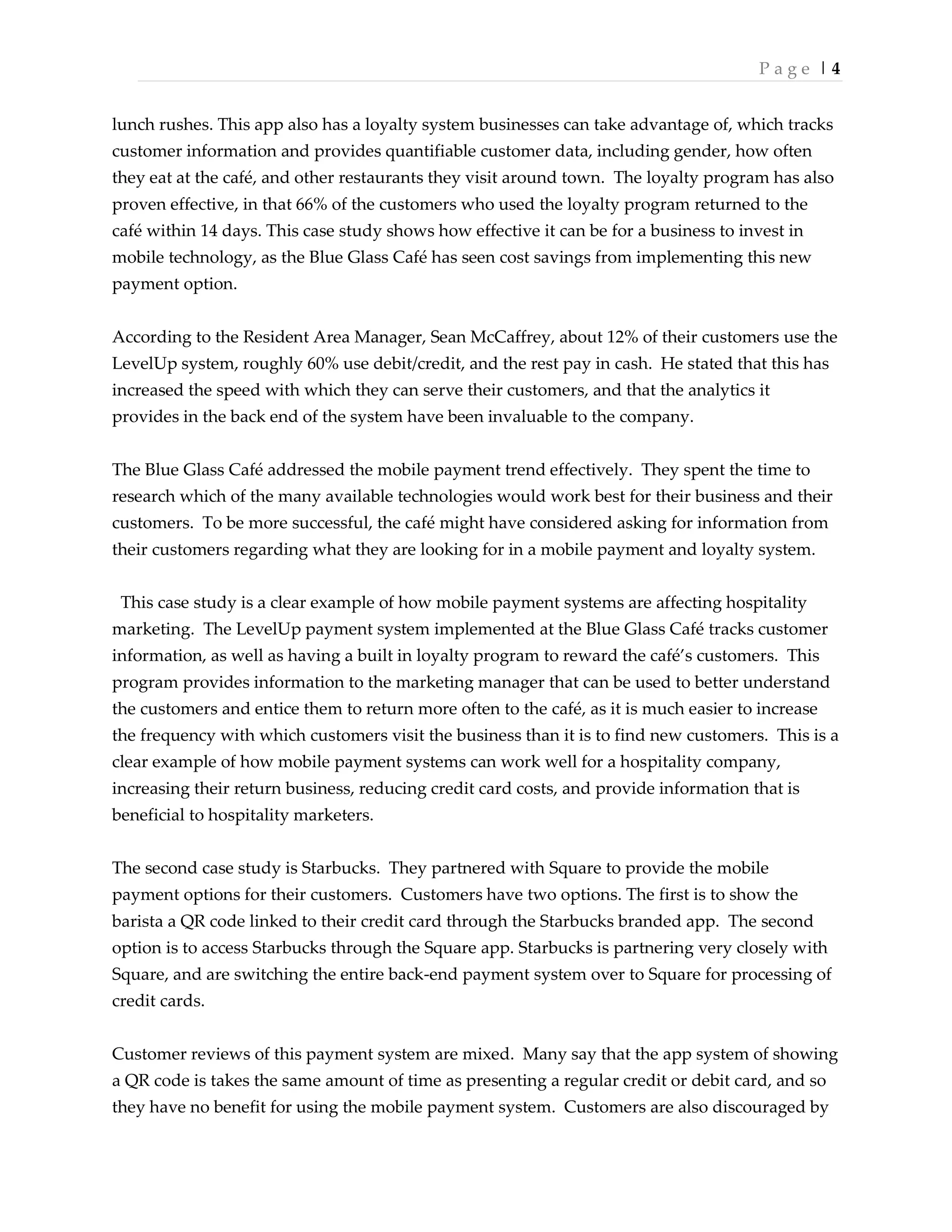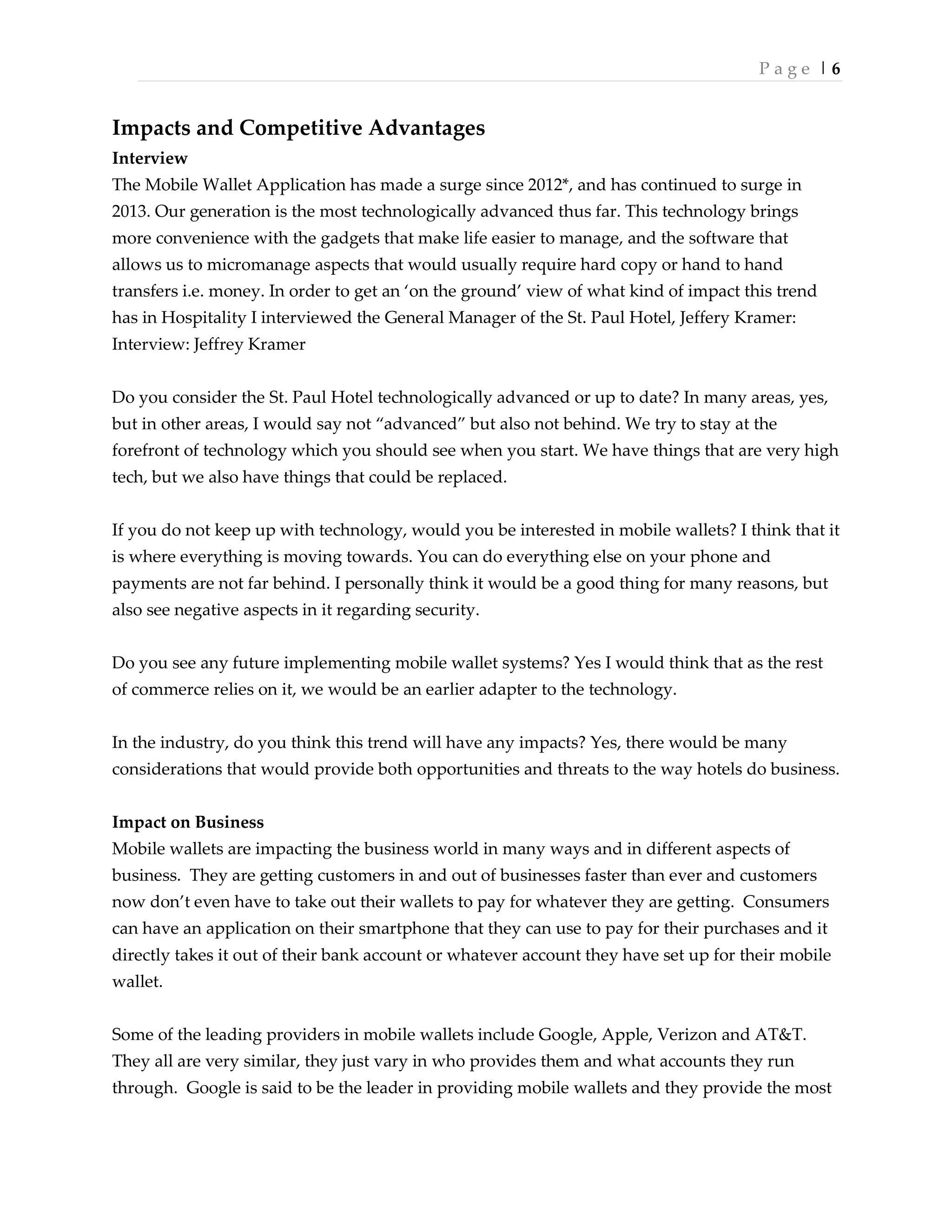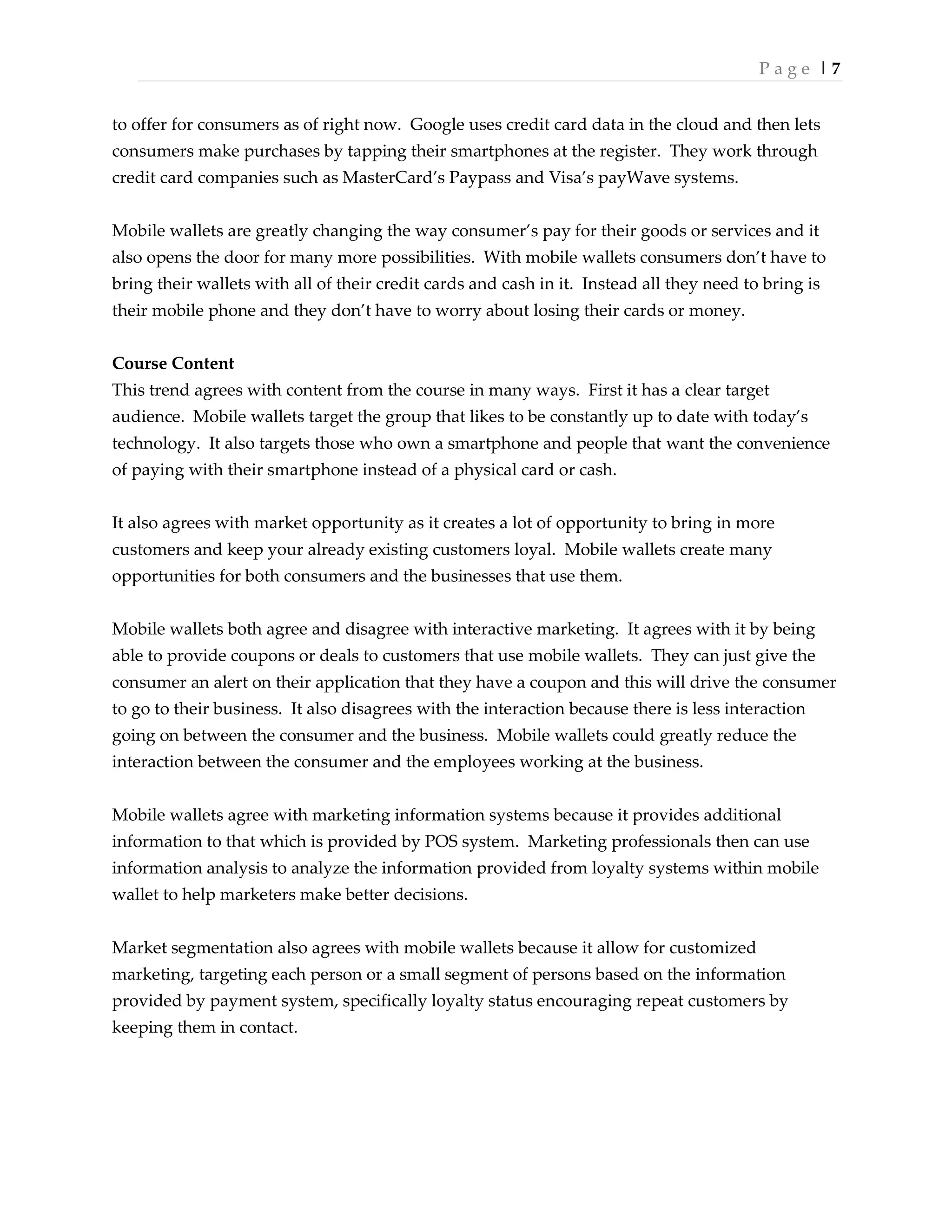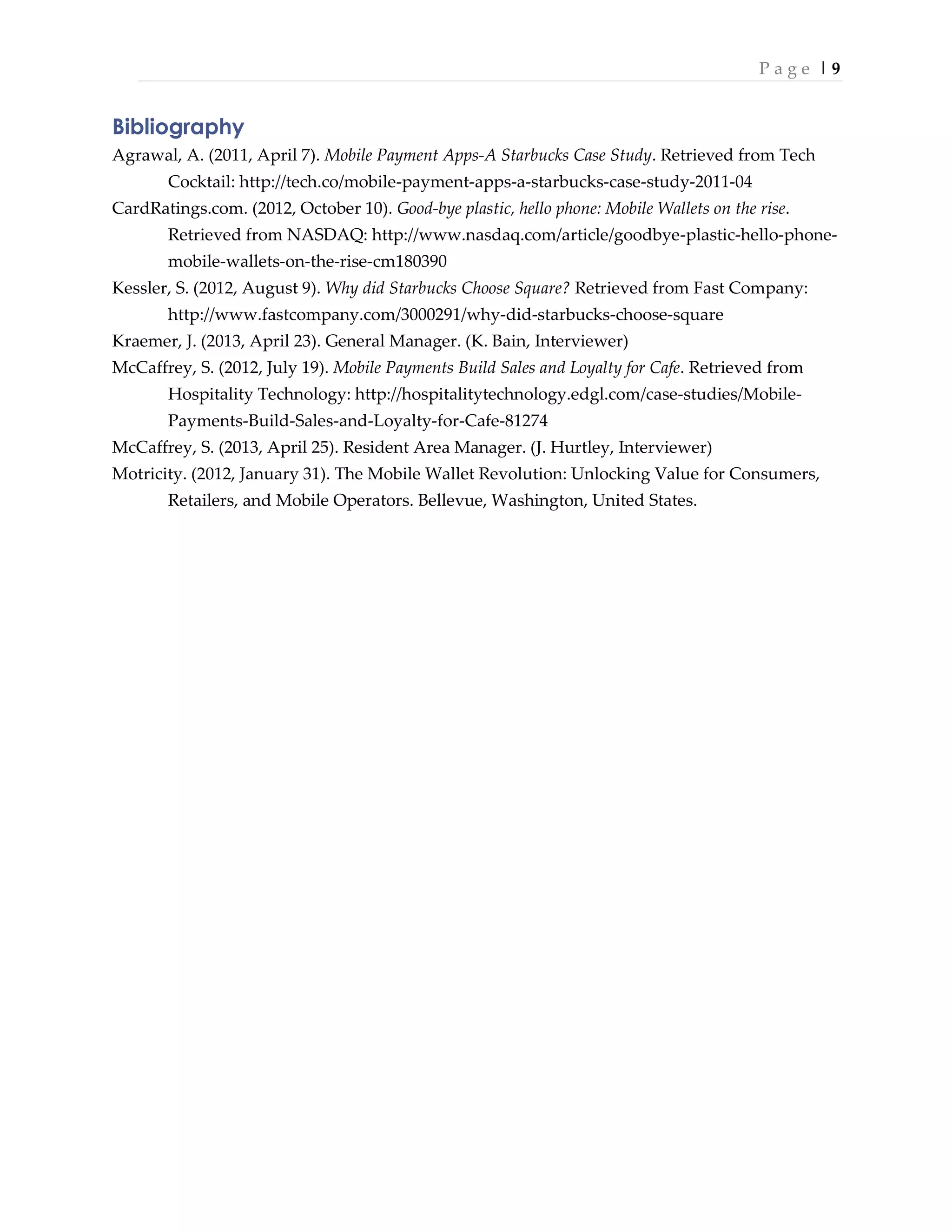This document discusses mobile payment systems and their importance. It provides examples of how mobile payment apps like Square work and the technologies that enable them like NFC, GPS, security encryption, and cloud storage. Two case studies are examined: the Blue Glass Cafe implemented the LevelUp app, seeing increased speeds and valuable customer analytics. Starbucks partnered with Square but customer reviews of the experience are mixed as it's not always faster than a credit card. The document advocates that mobile payments should make transactions easier for customers.
